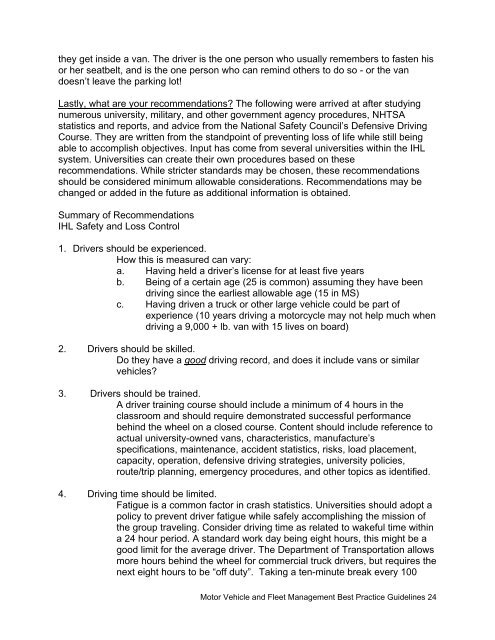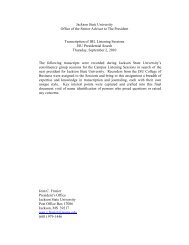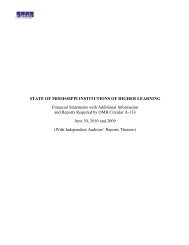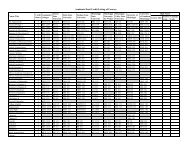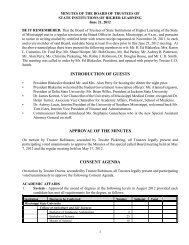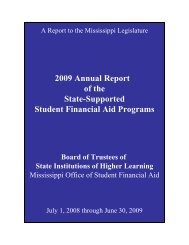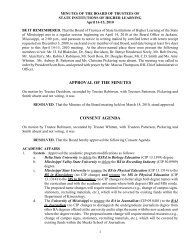Motor Vehicle And Fleet Management Best Practice Guidelines
Motor Vehicle And Fleet Management Best Practice Guidelines
Motor Vehicle And Fleet Management Best Practice Guidelines
You also want an ePaper? Increase the reach of your titles
YUMPU automatically turns print PDFs into web optimized ePapers that Google loves.
they get inside a van. The driver is the one person who usually remembers to fasten hisor her seatbelt, and is the one person who can remind others to do so - or the vandoesn’t leave the parking lot!Lastly, what are your recommendations? The following were arrived at after studyingnumerous university, military, and other government agency procedures, NHTSAstatistics and reports, and advice from the National Safety Council’s Defensive DrivingCourse. They are written from the standpoint of preventing loss of life while still beingable to accomplish objectives. Input has come from several universities within the IHLsystem. Universities can create their own procedures based on theserecommendations. While stricter standards may be chosen, these recommendationsshould be considered minimum allowable considerations. Recommendations may bechanged or added in the future as additional information is obtained.Summary of RecommendationsIHL Safety and Loss Control1. Drivers should be experienced.How this is measured can vary:a. Having held a driver’s license for at least five yearsb. Being of a certain age (25 is common) assuming they have beendriving since the earliest allowable age (15 in MS)c. Having driven a truck or other large vehicle could be part ofexperience (10 years driving a motorcycle may not help much whendriving a 9,000 + lb. van with 15 lives on board)2. Drivers should be skilled.Do they have a good driving record, and does it include vans or similarvehicles?3. Drivers should be trained.A driver training course should include a minimum of 4 hours in theclassroom and should require demonstrated successful performancebehind the wheel on a closed course. Content should include reference toactual university-owned vans, characteristics, manufacture’sspecifications, maintenance, accident statistics, risks, load placement,capacity, operation, defensive driving strategies, university policies,route/trip planning, emergency procedures, and other topics as identified.4. Driving time should be limited.Fatigue is a common factor in crash statistics. Universities should adopt apolicy to prevent driver fatigue while safely accomplishing the mission ofthe group traveling. Consider driving time as related to wakeful time withina 24 hour period. A standard work day being eight hours, this might be agood limit for the average driver. The Department of Transportation allowsmore hours behind the wheel for commercial truck drivers, but requires thenext eight hours to be “off duty”. Taking a ten-minute break every 100<strong>Motor</strong> <strong>Vehicle</strong> and <strong>Fleet</strong> <strong>Management</strong> <strong>Best</strong> <strong>Practice</strong> <strong>Guidelines</strong> 24


